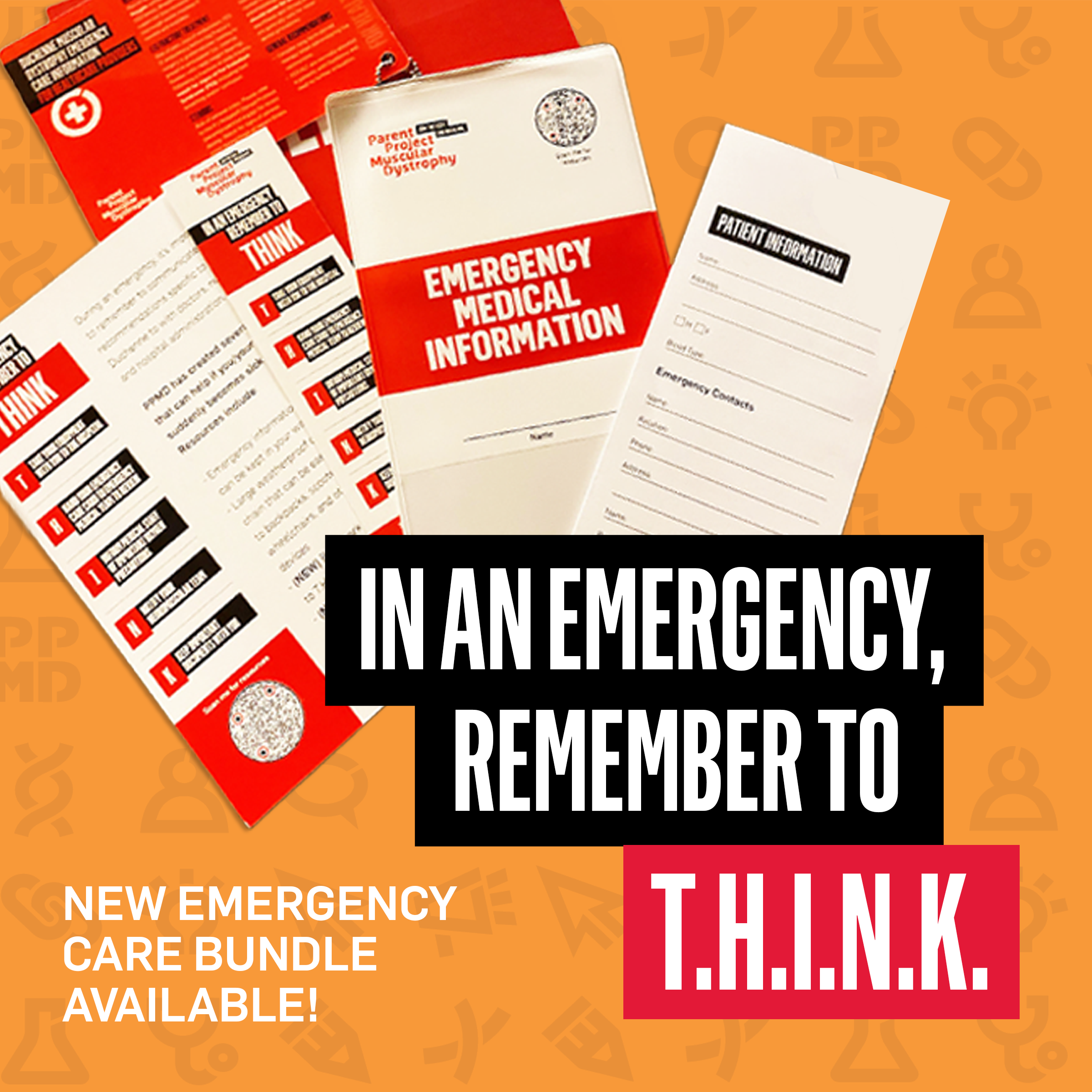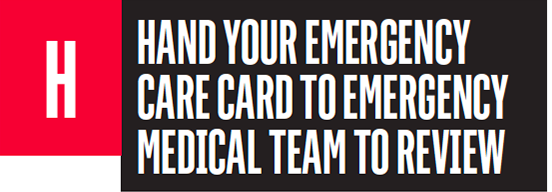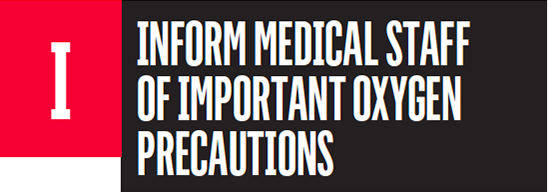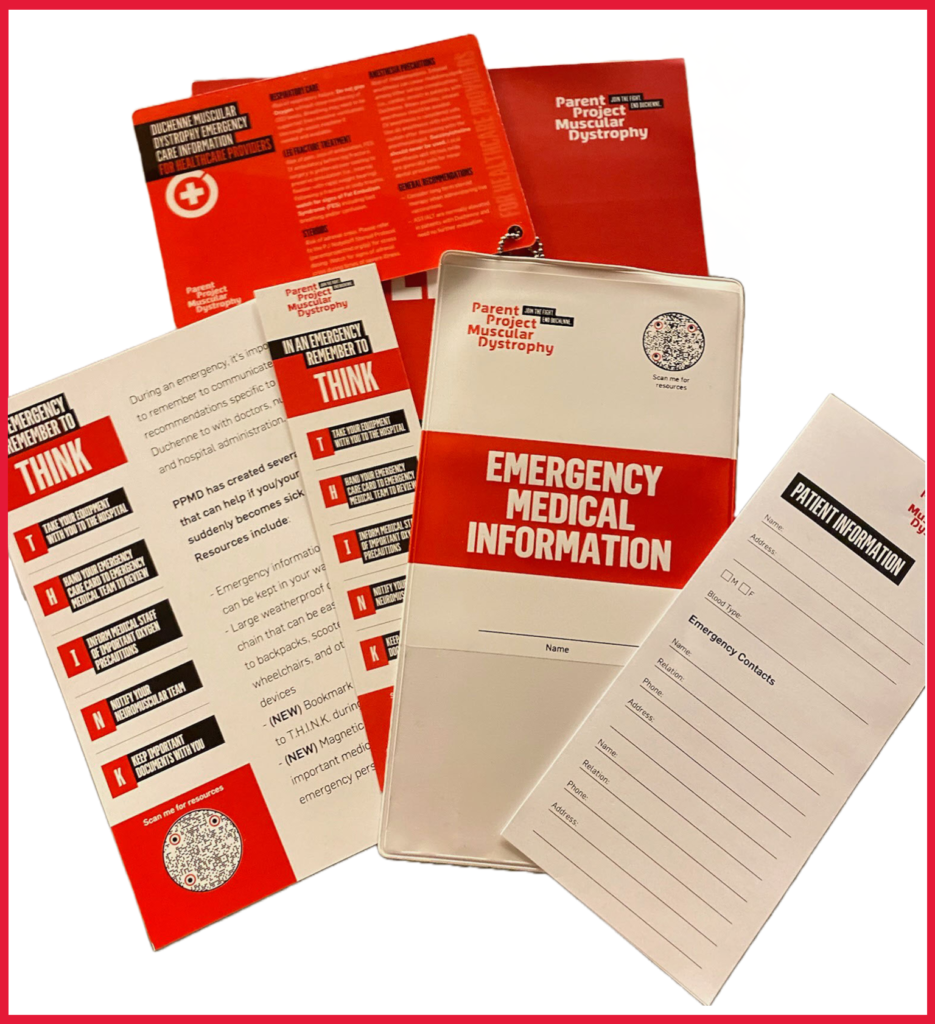
New PPMD Emergency Care Resources Available
As a parent, when your child has a medical emergency and your adrenaline kicks in, it can be difficult to remember all of the things you need to do and share with medical staff, especially when that emergency happens somewhere outside of where your Duchenne care team is located.
That’s why PPMD has created new emergency care resources to make it easier to communicate with your child’s care team during an emergency, no matter where you are.
New materials include:
- A magnetic folder to keep important medical information for emergency personnel
- Bookmarks and stickers that remind you to T.H.I.N.K. during an emergency (see additional information below!)
We want to thank a generous family in our community for supporting these important new resources.
In an emergency, remember to T.H.I.N.K.
PPMD’s new emergency care materials feature QR codes that direct to an easy-to-remember acronym reminding you of the important action items to T.H.I.N.K. about in an emergency:
- T – Take your equipment with you to the hospital.
- H – Hand your emergency information card to the medical staff.
- I – Inform medical staff of important oxygen precautions.
- N – Notify your neuromuscular team.
- K – Keep important documents with you.

Some hospitals may not have a cough assist or BiPAP machine on hand so it’s important to bring your own equipment with you if possible (and use it if indicated).

PPMD has two versions of emergency information cards — wallet cards and large weatherproof cards — that can be extremely helpful to share with doctors who are unfamiliar with Duchenne (click here to order free copies).
Many times during emergencies parents try to communicate all the emergency precautions by memory, forgetting this card has all of the information easily accessible. It’s also important to highlight the symptoms of Fat Embolism Syndrome (FES) on this card if your child has had a recent fall or trauma.

Many emergency personnel will default to administering oxygen during respiratory distress, and don’t realize the risk that holds for those with Duchenne. Let the staff know oxygen should only be used with pressure support (from his BiPAP) or with close CO2 monitoring.

If you are at a different hospital than where your neuromuscular team is located, it is extremely important to let them know what is going on with your child. Not only can they discuss your child’s medical history and plan of care, awareness that your child has had an emergency can help them provide better follow-up and improved monitoring moving forward. Do not assume the emergency providers will contact your doctor for you, and always confirm this connection has been made.

Whether paper or electronic (i.e. your phone, flash drive, etc.), keep important documents with you. Some important documents to share with local emergency rooms or hospitals include:
- Your child’s most recent neuromuscular note
- Current medication list
- Copy of PJ Nicholoff Steroid Protocol if your child is on steroids
- “About Me” information sheet
- Any legal paperwork (power of attorney, guardianship, etc).
All of the information included in these documents are imperative for your child to receive the best care possible, no matter where they are.
PPMD’s New ‘T.H.I.N.K.’ Emergency Care Materials
 To help remember what T.H.I.N.K. stands for, PPMD has created an online Emergency Care hub that can be reached quickly using a QR code located on our new materials, which include:
To help remember what T.H.I.N.K. stands for, PPMD has created an online Emergency Care hub that can be reached quickly using a QR code located on our new materials, which include:
Emergency Medical Information Magnetic Fridge Folder and Insert
PPMD has created an Emergency Medical Information magnetic fridge folder and insert (view insert) so that if emergency personnel show up at your house, your child’s most pertinent health information is easily accessible.
The insert includes a space to provide your child’s medical conditions, allergies, precautions specific to Duchenne, their neuromuscular team and primary care provider’s contact information, and any other important information they should know. This is also a good place to keep a copy of those important documents listed above.
This file also has the QR code located at the top so emergency personnel can be directed to PPMD’s Emergency Care hub for more details.
Bookmarks and Stickers
The Emergency Care hub QR code is located on the bottom of the bookmark (view), as well as on a sticker (view stickers) that you can place on various items often used by your child such as wheelchairs, binders, backpack, medical folder, or anywhere it could be accessible in an emergency.
You can also hand these stickers out to relatives and friends helping them to know what to do during an emergency if you are not around.
Order A Free PPMD Emergency Care Information Bundle
All of these resources are a way to help keep you prepared during an emergency and communicate vital information that can keep your child safe. You can order our “Emergency Care Bundle” for free here.
Resources include:
- Emergency information card that can be kept in your wallet
- Large weatherproof card with a chain that can be easily attached to backpacks, scooters, strollers, wheelchairs, and other mobility devices
- Bookmarks and stickers that remind you to T.H.I.N.K. during an emergency
- Magnetic folder to keep important medical information for emergency personnel
Additional Information
Find out more about what to do during an emergency by watching our Emergency Care Panel at PPMD’s 2022 Annual Conference in Scottsdale, Arizona.



 by: Parent Project Muscular Dystrophy
by: Parent Project Muscular Dystrophy

